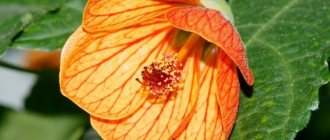Home » Flowers and plants » Flowers » Perennial flowers
Olga Polyakova 03/17/2020
5407 Views 1 comment
Gladioli came to us as one of the pieces of the heritage of the Roman Empire. While most residents of Antiquity considered gladioli, and the vaguely similar hollyhocks, to be weeds, in the houses of the Roman nobility these flowers were used to decorate the garden and interior. The name of the flower comes from the Latin word "gladius" - sword, since the leaves of these plants looked like swords. Currently, gladioli are cultivated almost everywhere. The diversity of gladioli species is relatively small: in total, botanists have described about two hundred species, however, the number of their varieties exceeds several thousand.
Culture propagation
There are several known ways to propagate gladioli:
- vegetative with the help of “children”;
- dividing corms;
- seeds.
Vegetative "children"
Every year, buds are formed on the corms of the fennel (on average from 20 to 50 pieces), depending on the varietal characteristics, which preserve the qualities of the mother plant. They are carefully separated from the main bulb using a disinfected knife, sprinkling the cut area with coal dust. Then the planting material is dried for 2-3 days, sorted, selecting the largest and most unspoiled specimens. Then they are sent for another 1-1.5 months to dry, after which they are placed in a box, laying out layers of children with paper. To store babies in winter, you need a cool place - a basement or vegetable drawer in the refrigerator.
Bulbs prepared in this way retain their quality and germination capacity for 2-3 years.
In the spring, to speed up the process, it is advisable to first obtain fennel seedlings. To do this, the children are peeled, immersed in warm water for a day, and then planted in a container with flower soil. Next, the process of growing seedlings and transplanting them to a permanent place is classical.
It is possible to plant the bulbs directly in open ground to a depth of 5 cm, creating a nutrient medium of peat and wood ash. To create a greenhouse effect, the top of the planting is covered with plastic film, which is periodically removed for ventilation and watering, and removed after a month.
Dividing the bulbs
Bulbs aged 2-3 years are suitable for propagation in this way. Division is carried out before planting begins. Choose corms with a wide bottom and cut them into 2-3 parts with a clean tool. The cut areas are disinfected in a solution of potassium permanganate and sprinkled with crushed coal. After the “dividings” have dried out a little, they are planted on the site. Further care is of a similar nature as in the case of reproduction by children.
Seeds
This method is more labor-intensive than others, and is not popular with gladioli.
You need to start germinating planting material in late winter or early spring.
First, prepare the substrate from a mixture of leaf humus and river sand in a 2:1 ratio. You can also add peat and pine needles in equal quantities. At the same time, the seeds are soaked for 2-3 hours in a weak solution (0.01%) of sodium humate or heteroauxin.
The seed is planted in a container with soil, watered and greenhouse conditions are created by covering the structure on top (polyethylene, glass). Further care occurs as when growing any seedlings (periodic ventilation and watering, if necessary, cropping, hardening, etc.).
With the onset of consistently warm weather, the seedlings can be transplanted into open ground or left in boxes, but in garden conditions. With good care, bulbs measuring 1-1.5 cm in size are formed already in the first summer season.
Important! With any type of planting material, in order to form full-fledged bulbs, it is necessary to remove flower stalks in a timely manner so that the plant’s strength goes to the root.
Varietal diversity
Gladiolus (Gladiolus L.) or Swordweed is a botanical type of plant from the Iris family, from which freesia, saffron, and iris come. Their homeland is the tropical and subtropical regions of Africa, the Mediterranean Sea, the Middle East and Western Siberia. Of the approximately 250 species of gladioli, 163 are native to South Africa.
Thanks to the crossing of gladioli, a huge number of multi-colored hybrids were obtained. Gladioli hybrids have been divided into groups based on origin, but it is almost impossible to determine which specific species individual varieties come from. Therefore, hybrid varieties of gladioli are simply called garden gladioli (Gladiolus x hybridus).
Gladioli were divided into 5 groups
| Name | Height, cm | Inflorescence |
| 1. Large-flowered | 90-120 (need support) | The length of the inflorescence is 40-90 cm. The flowers are in the shape of a triangle, with a diameter of 11-18 cm. |
| 2. Primrose | 45-90 (do not need support) | The diameter of the flower is 7-8 cm, the upper petal is bent forward. |
| 3. Butterflies | 60-90 | The diameter of the flower is 5-10 cm. A bright spot located in the throat of the flower resembles a butterfly. |
| 4. Miniature (dwarf) | 45-60 | The diameter of the flower is 5-6 cm. The inflorescence includes 14-16 flowers. The petals are often corrugated. |
| 5. Wild (species) | up to 60 | Small, funnel-shaped flowers are evenly distributed along the stem. They bloom early - in May-June. Relatively frost-resistant. |
For the needs of breeders and connoisseurs of gladioli, a special description of each variety was developed using a digital code. The first number indicates the diameter of the flower, the second and third indicate the color of the flowers. These indexes allow you to familiarize yourself with the main features of varieties in catalogs without having to read long descriptions.
Based on the size of the flower, swords are divided into 5 classes:
The most frost-hardy species that can overwinter in the garden include:
- Byzantine gladiolus (Gladiolus byzantinus). Light form, grows up to 60-80 cm. Delicate pink flowers bloom in May-June. The slender flower heads combine well with other early flowering plants.
- Tiled (Gladiolus imbricatus). Grows up to 80 cm. Blooms in June. Pink or purple flowers are collected in a dense spike. A forgotten South African hybrid, it is now making a comeback as an attractive addition to naturalistic gardens.
- Italian swordfish (Gladiolus italicus). Height 30-100 cm. Purple-pink flowers develop in May-July. Looks beautiful in combination with other flowers - for example, tulips, irises.
Cultivation care
Proper care ensures good growth and abundant flowering for gladioli.
Watering and loosening
Gladioli are moderately moisture-loving plants. They require regular and moderate watering. Classic scheme: once a week in the morning or evening, at the root, in a volume of 10-12 l/m2. However, in hot weather, the frequency of watering is increased to 2-3 times a week.
Stagnation of water, which contributes to the rotting process, is not allowed.
Particular attention should be paid to moisture at the stage of bud formation to ensure their timely blooming and preventing them from falling off.
It is advisable to combine weeding and loosening with watering. Even with mulch, weeds still appear. If necessary, the soil around the plant should be slightly hilled up.
Garter
For many species and varieties, especially tall ones, a garter is required to maintain the straight position of the stem. This procedure is carried out immediately after the formation of buds on the shoots, before they begin to open. Wooden cuttings can be used as stands or supports.
Top dressing
Gladioli, like all flowering crops, need regular feeding. On average there should be at least five or six of them per season. Some gardeners recommend only three feedings.
You should combine organic and mineral fertilizers, ready-made universal complexes, while alternating root and foliar feeding.
One of the feeding schemes for gladioli
It is most important to apply fertilizer at the stage of the appearance of the first leaves and the beginning of the formation of buds. These deadlines cannot be missed.
Recommended fertilizers for gladioli
| №№ | Period | Fertilizers and compositions used |
| 1 | After 2 leaves appear | Nitrogen fertilizers: Ammonium nitrate: granules – 5g/m2; aqueous solution – 30 g/10 l of water; Urea: aqueous solution – 30 g/10 l of water (watering and spraying); Ammonium sulfate: 40 g/10 l of water (watering only) Zircon (to stimulate growth, protect against diseases and pests): Spraying - 1 ampoule/10 l of water |
| 2 | Formation of 3-4 leaves | Potassium fertilizers: Potassium nitrate (urea, ammonium nitrate) – 35 g, potassium sulfate – 25 g per 10 l of water (watering) Boric acid (to increase disease resistance): Spraying – 2 g / 10 l of water |
| 3 | Formation of 5-6 sheets | Nitrogen-potassium fertilizers: Potassium salt – 30 g, urea – 15 g per 10 liters of water (irrigation) |
| 4 | Bud formation | Potassium fertilizers: Potassium salt, potassium sulfate, potassium magnesium - 20 g/10 l of water Organics (manure or bird droppings): For 3 l of water, 1 kg of manure or droppings, infusion for 10 days, dilution with water in a ratio of 1: 15 |
| 5 | Bloom | Phosphorus-potassium fertilizers with a small percentage of nitrogen: Azofoska – 30 g/10 l of water (watering only); Kemira universal – 20-30 g/10 l of water Wood ash: Wood ash – 100 g/10 l of water, infusion overnight, watering at a flow rate of 10 l/1m2 Banana peel infusion (to speed up flowering): For 3 l of water – 3 skins , infusion for 2 days, dilution with water in a ratio of 1:1 |
| 6 | End of flowering | Phosphorus-potassium fertilizers: Superphosphate – 30 g, potassium sulfate – 30 g per 10 liters of water; Potassium permanganate (to protect the plant): Spraying – 5 g/10 l of water |
The growth, development and flowering of the crop should be monitored and appropriate adjustments should be made to the feeding regime.
Work after flowering
Even during flowering, it is necessary to remove faded buds so that the plant has more strength to form new ones. After its completion, all flower stalks are removed. However, at least 4 leaves must be left on each specimen so that they completely hide the remains of the stem.
Experienced gardeners believe that manipulations associated with digging up bulbs before winter should be carried out 30-50 days after the end of flowering (or cutting). During this period, the corms and children develop fairly dense scales.
Definitely all work must be completed before the onset of cold weather and the first frosts.
Rules for digging and storing bulbs:
- Dig up the bulbs using a regular bayonet shovel, prying the soil at a distance of 25-30 cm from the plant.
- By hand, gently pull the bulb by the remaining leaves.
- Clear them of soil and trim the stem, leaving no more than 2cm at the base.
- Wash the bulbs using laundry soap.
- Disinfect the seed in a weak solution of potassium permanganate (0.5%).
- Dry the bulbs for a week in a warm place at a temperature of +28-30°C.
- It is better to place them in containers with air holes in one layer and place them in a cool place. You can fill them with wood ash.
- Optimal storage conditions: temperature +5-8°C, humidity - at least 70%, place - cellar, insulated loggia, as well as the bottom shelf in the refrigerator.
- Regularly ventilate and remove dried and diseased specimens.
It is advisable to leave the largest “babies”. However, they are stored separately from the bulbs for the purpose of subsequent planting and obtaining complete material from them by the end of summer.
Russian varieties of gladioli
Over the years, breeders have bred about 30 thousand different varieties and hybrids of gladioli. Many of them were lost over time, now the number of registered forms is about 10,000. Below is a description of some varieties and hybrids of gladioli bred in Russia.
Amorous mood
The height of the plant can reach up to 1.4 m. The flowers are a delicate mauve shade interspersed with raspberry, salmon or purple tones. Petals with long folds, edges strongly corrugated. The inflorescence is a dense two-row spike consisting of 20 buds.
Gladiolus Amorous mood can have up to 9 flowers open at the same time
Annushka
It is considered one of the most beautiful varieties of gladioli of Russian selection. The height of the plant is about 1.65 m. The flowers are pinkish with a salmon tint, the lower part of the corolla is yellow. The inflorescence is a double-sided spike with 24 buds, of which 12-14 can be open at the same time.
Annushka's petals are heavily corrugated
Aelita
A very beautiful gladiolus, grows up to 1.8 m. The flowers are painted in a delicate light lilac tone, with a bright purple-violet spot on the lower part of the corolla. The inflorescence is powerful, dense, the buds are arranged in 2 rows.
The stamens of gladiolus Aelita are purple
Balm of love
The height of the plant is about 1.5 m. The inflorescence is a spike with open round light peach flowers, the petals are wavy, the corrugation is weak. The color contains darker pink-violet tan markings.
In the throat of the corolla of the Balm of Love flower, crimson veins are clearly visible
White Wizard
It can grow up to 1.8 m. The inflorescence is an ideal powerful two-row spike about 0.9 m high with 23 large, up to 15 cm, buds, 9 of which can be open at the same time. The petals are heavily corrugated with folds and pinches at the throat of the corolla. The color of this variety of gladioli is milky white.
On the light background of the White Wizard's petals, crimson veins may appear
Great temptation
Gladiolus is quite tall, grows up to 1.5 m. The dense spike-shaped inflorescence contains up to 22 large buds, of which 10-12 are open at the same time. The flowers are scarlet, less saturated at the base.
The edges of the petals of the Great Temptation gladiolus are moderately corrugated
Hyperspace
The plant is tall, up to 1.8 m, and thanks to its long peduncles it is excellent for cutting. The inflorescence is a powerful, dense spike with 22 buds. The flowers are moire, with burgundy veins and dark tan marks, the edges are wavy.
Hyperspace - a variety with interesting line coloring
Daemon
The demon is not distinguished by its strong growth, the height of the plant is about 1.35 m. The flowers are dark burgundy, with black markings. The petals are corrugated. The ear is double-sided, dense, even.
Velvet Demon flowers look very impressive
Margot
A variety of gladioli with a very unusual contrasting color of flowers, which combines crimson and yellow. The bushes are low, up to 1.3 m. The inflorescence is a double-sided spike up to 0.7 m with 23 buds, of which 9 are open at the same time.
Read more Control of thrips on gladioli: preparations, treatment before storage
Margot - a variety with strongly corrugated petals
Black giant
Grows up to 1.6 m. The inflorescence-spike contains 23 buds, 9 open at the same time. The petals are velvety to the touch, the edges are corrugated. The color is dark burgundy, with graceful white rays.
The Black Giant's corolla is wide open
Soil preparation
Growing Byzantine gladiolus requires a lot of effort. In general, the culture is unpretentious. However, the soil for planting must be prepared according to all the rules.
It is best to choose sandy loam soil rich in humus for planting. You need to prepare the soil in the fall. It is definitely worth adding humus and lime.
Please note that fresh manure cannot be used. Otherwise, the flowering will not be as lush as usual, and the bulbs will not be able to be stored for a long time.
In spring, the soil must be dug up, leveled, and mineral fertilizers applied. Immediately before planting, the soil must be mixed with wood ash.
Dutch varieties of gladioli
The Dutch breeding school is considered one of the best in the world. This rightfully applies to gladioli, a huge number of beautiful varieties and hybrids of which were bred in this country.
Important! On average, about 100 new varietal and hybrid forms of gladioli are developed annually, and a significant share of this belongs to the Netherlands.
Adrenalin
This Dutch gladiolus is distinguished by its size, it reaches a height of 2 m, and the diameter of the flower can reach up to 15 cm. The color is pinkish-cream with raspberry-red streaks in the throat.
Adrenaline is suitable for lovers of large figures
Alfalfa
Grows up to 1.1 m. The ear is medium dense, double-sided. The flowers are purple, with a bright crimson stroke on the lower petals. The edges are smooth, the plate is slightly wavy. The corolla is wide open.
Alfalfa petals are round, without corrugation
Ajax
The variety is quite short, the stem can grow only up to 1 m. The spike is double-sided, loose, the flowers are large. The corolla is milky white, the lower petals have a bright scarlet smear.
Flowers of the Ajax variety can reach 16 cm
Black Jack
A widely known and very common variety of Dutch gladioli. The stem is small, up to 1 m. The flowers are large, 12-15 cm. The color of the petals is rich wine, ruby, denser at the edges. The corrugation is strong, the edges are black. A very effective variety.
Spectacular Black Jack is very popular among gardeners
Cheops
The average height of this flowering Dutch gladiolus is 1 m. The flowers are up to 15 cm, collected in a dense double-sided spike. The color is pale pink, the petals are wavy.
The bright pink border on the petals of Cheops looks very decorative
Cream Brulee
Low, up to 1 m, variety. The inflorescence is spike-shaped, bilateral. The corolla is open, the petals are creamy yellow, the edges are burgundy. The corrugation is weak.
The Creme Brulee inflorescence is not dense in the spike
Green Star
A variety with very unusual yellow flowers with a hint of lettuce. Grows up to 1.7 m. The inflorescence is a dense double-sided spike, the corolla is large, the petals are wavy.
Green Star is used to create a variety of flower arrangements.
Dynamite
Grows up to 1.2 m. The color of the petals is creamy yellow, turning purple at the edges with a reddish tint. The flowers are large, up to 15 cm.
Flowers of the Dynamite variety are moderately corrugated
Midnight
A very decorative variety with an unusual flower color, the petals at the base are light purple, as you move towards the edges the tone becomes more saturated, the edges are almost black. A bright red smear is clearly visible at the bottom. The inflorescence is loose. The average stem height is about 1.2 m.
Gladiolus Midnight has a rather loose ear
Important! Most Dutch varieties of gladioli are characterized by poor frost resistance.
Interesting facts about the plant
This exquisite flower was used not only as an amulet. In ancient Rome it was used as a medicine. And in the 17th – 18th centuries, it was used to relieve toothache and was prescribed to nursing mothers as a milk extractor.
For 3 centuries BC. In ancient Greece, gladioli bulbs were eaten. They ground them, added onions to them, put them in dough and baked flat cakes. In the Middle Ages, flour from ground flower bulbs was also used, adding it to the dough when baking bread.
The medieval knights of Europe - the Landsknechts - believed in the magical power of the flower and, just like the ancient Roman warriors, took their bulbs with them on military campaigns. They believed that the gladiolus rhizome was a reliable talisman against injury and death in battle.
In England, the flower was loved so much that the first society of gladioli growers was created there. The British still use the flower to decorate their gardens. Skewer is planted along borders and used to create entire flower arrangements. Look at the article about lily flowers.
The best varieties of gladioli
Choosing the best from the many gladioli is very difficult. A huge number of varieties and hybrids of various shapes and colors allows you to select the size and color of the flower with very high accuracy. Because of this, opinions about favorites often differ radically. The gladioli listed below are most often mentioned in reviews from gardeners and have an increased rating.
Blue Isle
The height of the stem is 0.8-1 m. The inflorescence is a one-sided double-row spike with 15 buds. The color of the petals is blue, with white strokes.
The feathery coloring of Blue Isle creates a lace effect.
Blue Frost
The plant is large. The flowers are a soft blue hue, with bright blue veins. The edges of the petals are light purple, highly corrugated.
Blue Frost is a real giant, can grow up to 2 m
Faro
The height of the plant can reach 1-1.2 m. The flowers are purple, the middle is light. The corolla is open. There is a white streak on the lower petals.
The Faro variety is well known and loved by many gardeners.
Maya Plisetskaya
A new Russian variety of gladioli. The flowers are a creamy-yellowish hue, transitioning to salmon; in the center of the corolla the yellow color predominates with small red splashes. The edges of the petals are very wavy. The height of the stem can reach up to 1.8 m, half of which is occupied by the inflorescence - the spike.
Maya Plisetskaya is a prize-winner of many exhibitions
Raspberry lace
Height up to 1.5 m, inflorescence occupies about 0.7 m. The color of the corolla is light crimson, the edges of the petals are darker. The corrugation is very strong.
The inflorescence spike of this gladiolus is very dense
Forest Nymph
A very unusual variety with highly corrugated petals. The color is lilac-raspberry, with a light green-yellow center. The average flower height is 1.4-1.45 m.
Of the 23 buds of the gladiolus Forest Nymph, 8 are open at the same time
Massandra
Quite tall, up to 1.5 m, gladiolus with a powerful stem. The color is raspberry-scarlet, rich. The lower petals are champagne-colored. The edges are heavily corrugated.
The result of the work of Russian breeders - gladiolus Massandra
Gypsy happiness
A very unusual variety of smoky color with highly corrugated petals. The color is lingonberry-wine, the border is painted green. Height 1.2-1.5 m.
The variety Gypsy happiness was released in 2022
Varieties of gladioli with large flowers
Large-flowered varieties include varieties and hybrids whose flower corollas exceed 12 cm in size. Many of the gladioli already mentioned belong to this category, but several more can be added to this list.
Blue Bird
The height of the plant is 1 m or slightly more. The flowers are large, rich plum color, with a lighter corolla in the central part. There are white tongues at the base of the petals.
The round petals of Blue Bird are slightly corrugated
Buccaco
A hybrid with very showy large flowers. Grows up to 1.2 m. The petals have a wavy edge and are slightly corrugated.
Gladiolus of unusual chocolate color – Buccako
Belle de Nuit
The plant grows up to 1-1.4 m. The petals are colored violet-purple, the tongues are dark red. The edges are slightly corrugated.
The size of Belle de Nui flowers can reach 18 cm
Invitate
It has an unusual three-color color. The height of the plant can reach 1.1 m. The petals are rounded, the edges are smooth. The corolla is large and open.
Invitate coloring consists of a mixture of white and pink colors of varying intensities
Costa
Grows up to 1 m or slightly higher. The flowers are light lilac, more densely colored on the periphery, the border is bright, and there are darker strokes in the central part of the corolla. The edge of the petals is wavy.
Graceful Costa gladioli look great in a bouquet
Violetta
Grows up to 1.1-1.2 m. The color is rich purple, with a lighter central vein of the petals. The corrugation is weak, finely toothed. The inflorescence is smooth and dense.
The Violetta variety is distinguished by rounded petals and an open corolla
Nashville
A spectacular tricolor variety. The petals are unevenly colored, at the base they are reddish with a cherry tint, the central part is creamy yellow, the edges have a lilac-pinkish tone.
Nashville can grow up to 1.5 m
Vera Lynn
The color of this gladiolus is very impressive; the petals have a soft pink central part and a dashed purple edge. Corrugation is practically absent. Can grow up to 1.5 m.
Flowers with a purple tongue - gladiolus Vera Lynn
How to deal with diseases and pests?
Disease Control
Gladioli are beautiful flowers that are just as susceptible to disease and pest attacks as any other plant, even if proper care is taken at home.
- The onion root mite colonizes the larvae in the bulbs, which leads to the complete drying out of the gladiolus. In this case, the soil itself becomes infected, and therefore there is a high risk of damage to neighboring plants. It is advisable to immediately burn the affected plant along with all plant debris collected from the area where the pest was noticed. To disinfect and prevent bulbs from this pest, you need to subject them to heat treatment (“bathing” for 5 minutes in water at 50 degrees) or spray them with Karbofos.
- Dry and yellow leaves indicate fungal infection. Such corms should be destroyed. To prevent the disease from returning, for prevention, the corms are stored in ventilated places, and during the growing season the plants are fed with magnesium.
- Thrips are a well-known pest that sucks juices from crops. Early cutting or disinfection by immersion in hot water (50 degrees for 5 minutes) can save the bulbs from it. Plants such as calendula and garlic, planted nearby, drive away thrips.
- Dry rot causes the plant to slowly die. Affected bulbs become mummified during storage (if the disease is not immediately noticed). Losses when spores appear can be up to 50%, so any affected bulbs must be removed, and the soil must be dug up in the fall with a full rotation of the layer so that during winter frosts the disease is destroyed naturally. The bulbs themselves are disinfected by planting them in horse manure, and only after they have germinated can they be transplanted to their usual place.
Gladioli always grow abundantly and colorfully, pleasing the gardener's eye. Caring for them at home is not difficult, the main thing is to remember some rules and follow them year after year, then there will never be problems with growing them.
New varieties of gladioli
This section lists some new products on the gladioli market. Some of them are already on sale, others are just planning to appear on store shelves.
Brown Sugar
The height of the stem can reach 1.2 m. The inflorescence-spike is quite dense, consisting of 2 rows of large buds. The flowers are bright, large, the color of the inner part of the corolla is yellow-orange, on the periphery it turns into rich pink, and at the tips - almost black. The edge is slightly corrugated.
The color Brown Sugar combines yellow and red very harmoniously
Cimarosa
Grows up to 1.1 m. The flowers are soft pink, with crimson dashes. The petals are corrugated, with a wavy edge.
Cimarosa is very good for cutting
Debussy
It can grow up to 1-1.1 m. The color of the flowers is carmine-red, the central part of the corolla is creamy-yellow. The corrugation is strong, the edges of the petals are wavy. The ear is quite loose.
Debussy variety blooms from July to September
Frizzled Coral Lace
A special feature of this low-growing variety of gladioli is the unusually strong corrugation of the petals. The color is pinkish-coral, lighter in the lower part of the corolla. The height of the stem can reach up to 1 m.
The Frizzled Coral Layz variety looks great in bouquets
Evergreen
Grows up to 1-1.1 m. The inflorescence is a dense spike up to 0.5 m long. The color of the flowers is greenish, with a hint of lime, the edges of the petals are strongly corrugated.
Gladiolus Evergreen was bred by the Dutch company Florex BV
Helvetia
Large size variety. The flowers are large, bright red, with milky white strokes at the bottom of the corolla. The edges of the petals are slightly corrugated.
Important! The variety is excellent for cutting.
Gladiolus Helvetia can grow up to 2 m
Jester
The height of the stem can reach up to 1.3 m. The flowers are large, canary yellow, with a bright red stroke at the bottom of the corolla. The petals are individually corrugated along the edges.
Read more How to care for gladioli in the fall and prepare them for winter
Gladioli of the Jaster variety will decorate any garden
Wine and Roses
The height of the stem can reach 1 m. The flowers are large, up to 15 cm. The color is soft pink, with bright wine spots in the lower part of the corolla. The edges of the petals are heavily corrugated.
Vine & Rose stamens are colored the same as the petals











